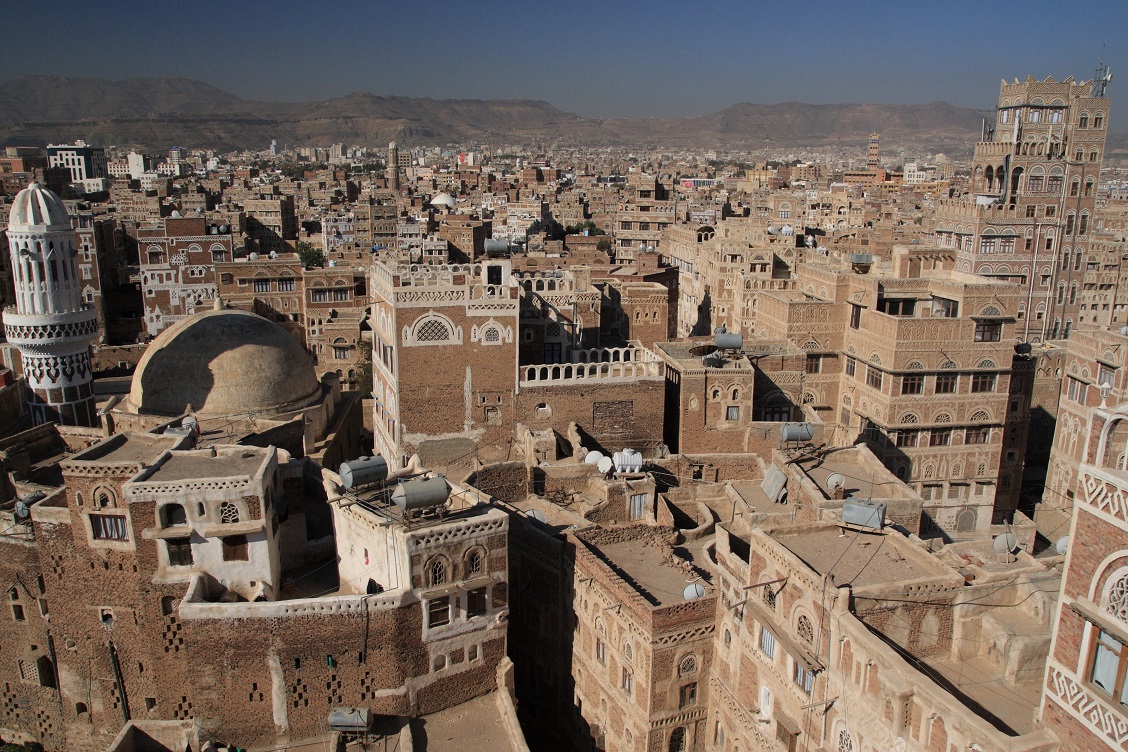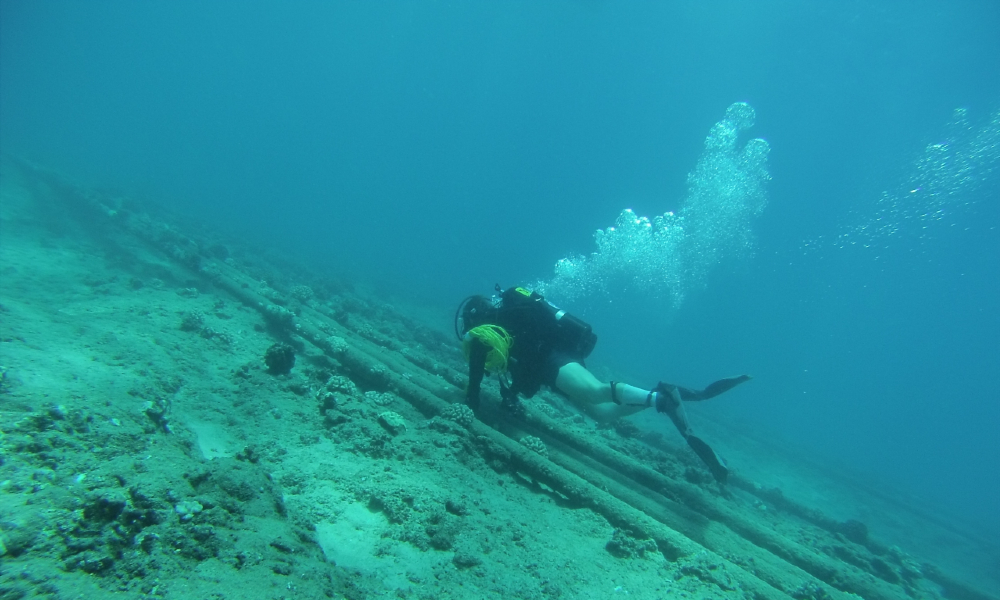The Conflict in Yemen: A Primer
Yemen is in the midst of an unfathomable humanitarian crisis. International organizations have warned that Yemenis will soon face the world’s largest famine in decades, brought on by a war that has ravaged the country for the past several years.

Published by The Lawfare Institute
in Cooperation With

Yemen is in the midst of an unfathomable humanitarian crisis. International organizations have warned that Yemenis will soon face the world’s largest famine in decades, brought on by a war that has ravaged the country for the past several years. This war has escalated in recent weeks, compounding the impending famine and bringing Yemen back into public discourse in the West.
Yemen is, in many ways, a perfect storm of several issues seen across the Middle East: a failed Arab Spring revolution, a proxy war with some sectarian overtones, U.S. support for a Saudi bombing campaign, al-Qaida and Islamic State group attacks, and the worst humanitarian crisis in the world. And its demographics aren’t helping. Yemen, the poorest country in the Middle East, has a rapidly growing, very young population that is increasingly concentrated in urban centers in the western part of the country. It has much less oil than its neighbors, and what little oil production it had has declined in recent years due to the war. Yemen is also running out of water, which is one of the reasons Yemenis are facing a massive cholera outbreak.
On top of these issues, many countries have important strategic stakes in Yemen. It’s located on the Bab el-Mandeb strait, an important shipping lane through which millions of barrels of oil pass daily. Added to this economic consideration is the terrorism issue: several terrorist groups, most notably al-Qaida in the Arabian Peninsula, have traditionally made their home in Yemen’s remote eastern regions. As archetypal as it might seem, however, the war and its accompanying humanitarian catastrophe are closely tied to Yemen’s complicated past. Any attempt at a solution requires a deep understanding of the conflict’s history.
Pre-1990: North and South Yemen
The Republic of Yemen is less than three decades old. For centuries Yemen was divided into north and south, though the names are somewhat of a misnomer: North Yemen is the northwest of the territory, and South Yemen includes the south and all of the east. (The European Council on Foreign Relations has some helpful maps.) In the 19th century, North Yemen fell under Ottoman rule, and only gained its independence when the Ottoman Empire collapsed in 1918. The north was then governed as an imamate led by a Zaydi Shiite religious leader. Zaydi Shiism is a branch of Shiite Islam found almost exclusively in Yemen, and it predominates in North Yemen.
This Zaydi government continued until 1962, when the military staged a coup and established the Yemen Arab Republic in North Yemen. This led to several years of civil war in the north between the military-led republicans and the royalists who had supported the Zaydi monarchy. The conflict quickly became a proxy war between Egypt and Saudi Arabia: Egypt, a brand-new republic itching to expand its influence in the Arab world, sent troops to support the republicans, while the Saudi monarchy aided the royalists to stem the spread of republicanism. When the war finally ended in 1970, the republicans won out.
Meanwhile, in the 1960s, South Yemen gained its independence from British and Saudi rule. It became the People’s Democratic Republic of Yemen and aligned itself with the Soviet bloc, becoming the only communist country in the Arab world. For the next couple decades, there were ongoing clashes between the USSR-backed south and the U.S.- and Saudi-backed north, interspersed with attempts to unify them.
1990-2011: Ali Abdallah Saleh’s Yemen
North and South Yemen finally merged in 1990 in the wake of the Soviet bloc’s disintegration. Ali Abdallah Saleh, who had been president of North Yemen since 1978, led the new Republic of Yemen. Despite unification, the tensions between the north and south persisted, and civil war broke out in 1994 as southerners decried the north’s continued marginalization of their interests. Saleh quashed the opposition within a few months and reasserted central control.
But Saleh’s government soon faced more resistance, this time in the north. A religious revivalist movement had begun in the 1990s among the north’s Zaydi Shiite population. This movement, commonly called the Houthi movement after its namesake leader, was meant to reassert Zaydism and Zaydi traditions in the face of fundamentalist Sunni proselytizing supported by Saudi Arabia. But in the early 2000s, the Houthis took on a more political bent, criticizing many of President Saleh’s policies. They were primarily concerned with the growing relationship between Saleh and the United States and worried about increasing foreign influence in Yemen. As such, they actively opposed many of Saleh’s actions, most notably his support for the 2003 invasion of Iraq. Eventually, this opposition became outright insurgency. Between 2004 and 2010, there were six conflicts between Houthi rebels and Saleh’s government.
2011-2014: Revolution and Transitional Government
Against this backdrop of civil strife, Houthi insurgency, and Saleh’s 33-year rule came the Arab Spring. Inspired by the protests in Tunisia, tens of thousands of Yemenis took to the streets in January 2011, demanding Saleh’s resignation. Violence increased over the next few months as Saleh refused to resign, with government forces and Saleh’s supporters cracking down on demonstrators and killing scores.
Finally, in November 2011, Saleh bowed to domestic and international pressure and signed an agreement to cede power to his vice president, Abdrabbuh Mansour Hadi. The agreement had been brokered by the Gulf Cooperation Council (GCC) with support from the U.S. and Saudi Arabia. In addition to the transfer of power, it provided for a two-year transitional period during which a U.N.-backed National Dialogue Conference (NDC) would draft a new constitution and hold elections. Hadi was officially elected president for the transitional period in February 2012, and was inaugurated shortly thereafter.
This peaceful inauguration was the moment when it seemed that Yemen might be an Arab Spring success story. But as in many other Arab Spring countries, the moment was sadly short-lived. Hadi struggled to maintain control over Yemen in the face of a tanking economy, al-Qaida attacks, and a separatist movement in the south. Houthi rebels continued to fight the central government and advance southward from their stronghold in the northwest. And the NDC, which concluded in January 2014, was only somewhat successful. It did produce a generally accepted document on which the new constitution would be based, which included a proposal to make Yemen a federal state of six regions. But both the Houthis and southern leaders were dissatisfied with the division of the new regions, and the Houthis ultimately rejected the draft constitution because of it.
In the midst of all of this, in July 2014, Hadi announced cuts to fuel subsidies, which the International Monetary Fund had encouraged as part of a loan agreement. The resulting severe hike in fuel prices—a huge hit to Yemen’s poverty-stricken population—provoked Houthi-backed protests that only further destabilized the government and the country. In the face of this unrest, Hadi rescinded the cuts, but the damage was done.
2014-2015: The Houthi Advance
In September 2014, Houthi rebels took advantage of the increasing chaos by seizing control of most of the capital, Sanaa. They were supported not only by Yemenis frustrated with the failures of the transitional government, but also by factions of the Yemeni security forces that were still loyal to Saleh. Though Saleh had spent the 2000s fighting Houthi insurgents, he formed an alliance with the Houthis post-revolution as a tactical maneuver to undermine Hadi and the transitional government. In the face of the Houthi advance and popular pressure, Hadi signed a U.N.-brokered accord with the Houthis to form a new, more inclusive government within a month.
This tentative peace didn’t last long. The Houthis soon rejected the new government and constitution, and in January 2015, they reinforced their control over Sanaa and effectively placed Hadi and his government under house arrest. In February, they dissolved parliament and formed a new transitional government; the U.N., U.S., and GCC quickly denounced the coup. Soon after, Hadi managed to escape house arrest and flee to Aden.
The Houthis then began a military campaign to expand their control. In March 2015 they advanced southward from Sanaa, eventually taking over most of western Yemen and forcing Hadi to flee Aden for Saudi Arabia. With the support of Saleh loyalists in the armed forces, the Houthis were able to seize large parts of the country as they moved south towards Aden.
2015-2017: Saudi Intervention
The Houthis’ southern advance was the last straw for the Saudis. Saudi Arabia had been watching the conflict in Yemen with increasing unease, not only because of the security issues associated with an unstable border state but also because Iran supports the Houthis. Iran provides the Houthis with military aid and arms, which the Saudis see as part of Iran’s broader attempt to dominate the Middle East by backing Shiite groups in Sunni countries. Concern about an Iran-supported Houthi government was one of the reasons Saudi Arabia originally decided to back the Sunni-supported Hadi government.
Facing the prospect of an Iran-aligned southern neighbor after the Houthi advance, Saudi Arabia formed a military coalition with eight other Arab states, with intelligence, arms, and logistical support from the U.S. and the U.K.. The coalition began an airstrike campaign in March 2015 to push back the Houthis and restore Hadi’s government. The Saudis expected a quick victory, but the Houthis dug in their heels; it took four months for the coalition to drive the Houthis from Aden in a battle that claimed hundreds of lives. Hadi returned to Aden in September, but the coalition campaign was hardly complete. Coalition air strikes continued across Houthi-held territories, and pro-government forces used newly recaptured Aden as a base in the south from which to fight the Houthis and Saleh loyalists. This state of affairs continues today: though the coalition has managed to regain some territory from the Houthis, it still has not driven the rebels out of Sanaa or their traditional northern strongholds.
This entrenched conflict has turned Yemen into an ongoing proxy war between Saudi Arabia and Iran, though some have questioned the extent of Iran’s ties to the Houthis. However much of a proxy war it may be, though, it’s not obviously a sectarian conflict. The Houthis and Iran adhere to two different branches of Shiism, and the Houthis’ Zaydi Shiism is closer to Sunni Islam than to Iran’s Twelver Shiism There are also Sunnis who work with or support the Houthis, primarily Saleh loyalists. Furthermore, the Houthis’ goals appear to be more political than religious: they want regional autonomy for their native north and a greater stake in government.
2017: Where Are We Now?
The short answer: Nowhere good.
The war is at a stalemate. There are functionally two governments: the Houthis in Sanaa, and Hadi in Aden. U.N.-sponsored peace talks in 2016 went nowhere, as have subsequent attempts at reconciliation. Tensions have risen significantly in just the past few weeks after the Houthis launched a ballistic missile at Riyadh on Nov. 4. (The Saudis intercepted it before it hit.) Saudi Arabia accused Iran of committing an “act of war” by supplying the Houthis with that missile and others, which Iran denies. The Trump administration has supported the Saudi statement and is pushing for the international community to place greater blame on Iran for its role in the conflict.
Meanwhile, the military campaigns have had devastating impacts on civilians. In January 2017, the death toll passed 10,000, with 40,000 injured. The coalition has been fiercely criticized for air strikes that have hit civilian sites like schools and hospitals, and in September the U.N. blacklisted the coalition for killing and injuring hundreds of children.
The humanitarian crisis doesn’t stop there. More than 2,100 Yemenis have died from cholera in the worst cholera outbreak in modern history, and experts say over one million people will be infected by the end of 2017. Perhaps most desperately, Yemenis are facing famine: 17 million people are food insecure, almost 7 million severely so, and severe malnourishment is rampant. This is partially due to prewar food insecurity and the war’s effect on the economy, but is primarily the consequence of a blockade by the Saudi-led coalition. For decades, Yemen has relied on imports for around 90 percent of its food needs, and the Saudi blockade—meant to prevent arms shipments to the Houthis—has cut off Yemenis’ access to food, along with medicine, fuel, and other humanitarian aid.
The specter of famine has grown in the past few weeks as Saudi Arabia has tightened the blockade in response to the Houthis’ Nov. 4 missile attack. The emergency is so acute that the U.N. Under-Secretary-General for Humanitarian Affairs Mark Lowcock said that if the blockade is not lifted, Yemen will face “the largest famine the world has seen for many decades, with millions of victims.” While Saudi Arabia has agreed to allow in humanitarian assistance, so far it has only opened ports in southern, Hadi-controlled territory. Ports in the Houthi-controlled north are still blocked, meaning it is incredibly difficult to get aid to those areas, where the situation is most desperate.
There is obviously no clear answer or easy out to the war; the situation is so desperate that many are calling Yemen a failed state. It remains to be seen whether the warring factions will wear themselves out, or if the international community will be able to broker any sort of agreement. Meanwhile, despite some calls for aid and assistance, Yemenis are stranded in the face of humanitarian catastrophe.





